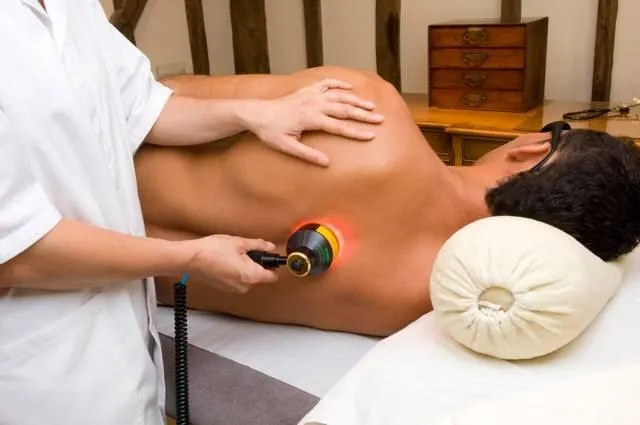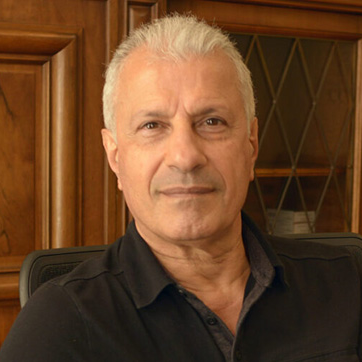
What Can Low Level Laser Therapy Treat?
Introduction to Low-Level Laser Therapy (LLLT)
Low-Level Laser Therapy (LLLT) is a non-invasive, light-based treatment that uses low-energy lasers to stimulate cellular processes in the body. It has gained recognition for its ability to reduce pain, promote healing, and treat a wide range of medical and cosmetic conditions. By delivering light energy directly to the cells, LLLT enhances cellular function, reduces inflammation, and accelerates tissue repair, making it an effective option for various treatments.
Musculoskeletal Conditions Treated by LLLT
Chronic Pain and Inflammation
LLLT is widely used to treat chronic pain and inflammation, especially in musculoskeletal conditions. The therapy helps reduce the production of pro-inflammatory cytokines while promoting anti-inflammatory factors. This makes LLLT effective in conditions like fibromyalgia, tendonitis, and repetitive strain injuries. Patients often experience a reduction in pain after just a few sessions, with continued improvements over time.
Arthritis and Joint Pain
Arthritis, a condition characterized by joint inflammation, can be effectively managed with LLLT. The therapy helps reduce joint stiffness and pain in conditions like osteoarthritis and rheumatoid arthritis by stimulating cartilage regeneration and reducing inflammation in the affected joints. LLLT also improves joint flexibility, enhancing mobility for arthritis patients.
Back and Neck Pain
LLLT is frequently used to treat acute and chronic back and neck pain. Whether caused by muscle strain, herniated discs, or poor posture, LLLT helps alleviate pain by promoting healing at the cellular level. By improving circulation and reducing inflammation, LLLT accelerates the healing of damaged tissues, leading to long-lasting relief from pain and stiffness.
Sports Injuries and Soft Tissue Damage
Athletes often turn to LLLT for the treatment of sports injuries like sprains, strains, and ligament tears. The therapy accelerates the body’s natural healing processes, reducing downtime and promoting faster recovery. In addition to reducing pain and inflammation, LLLT can help heal soft tissue injuries, such as tendonitis and muscle tears, allowing athletes to return to activity more quickly.
Skin Conditions and Dermatological Applications
Acne and Skin Inflammation
LLLT is a popular treatment for acne and skin inflammation. It reduces the activity of sebaceous glands, which are responsible for producing excess oil that can clog pores and lead to acne. Additionally, LLLT helps reduce inflammation, promoting clearer skin with fewer breakouts. It is often used in combination with other acne treatments to enhance results.
Wound Healing and Scar Reduction
One of the most well-established uses of LLLT is in wound healing. By promoting collagen production and enhancing cellular regeneration, LLLT accelerates the healing process for wounds, ulcers, and burns. It is also effective in reducing the appearance of scars by stimulating new tissue growth and improving skin texture, making it a popular choice for post-surgical scar management.
Skin Rejuvenation and Anti-Aging Treatments
In dermatology, LLLT is used to promote skin rejuvenation and combat the signs of aging. By stimulating collagen and elastin production, LLLT helps reduce the appearance of fine lines and wrinkles while improving skin elasticity. The therapy can also improve skin tone and texture, making it a favoured option for non-invasive anti-aging treatments.
Neurological and Nerve-Related Conditions
Peripheral Neuropathy
LLLT has shown promise in treating peripheral neuropathy, a condition that affects the nerves in the hands and feet, often causing pain, numbness, and tingling. LLLT improves blood flow to the affected nerves and stimulates nerve regeneration, leading to a reduction in symptoms and improved nerve function.
Nerve Regeneration
In cases of nerve damage, such as after trauma or surgery, LLLT can help promote nerve regeneration. By stimulating cellular activity, LLLT accelerates the repair of damaged nerves, helping to restore sensation and function over time. This makes LLLT a valuable tool in nerve recovery protocols, often used alongside other rehabilitation therapies.
Migraine and Headache Relief
LLLT has been explored as a treatment for migraines and chronic headaches. The therapy helps reduce pain by improving circulation and reducing inflammation in the head and neck areas. For some patients, LLLT has been effective in decreasing the frequency and severity of headaches, offering a drug-free alternative for pain relief.
Dental and Oral Health Applications
TMJ Disorders
Temporomandibular joint (TMJ) disorders, which cause jaw pain and difficulty in movement, can be effectively treated with LLLT. The therapy reduces inflammation and muscle tension around the jaw, leading to improved function and relief from pain. LLLT can also be combined with other TMJ treatments, such as physical therapy, to enhance results.
Post-Surgical Healing in Dentistry
In dental practices, LLLT is commonly used to promote healing after oral surgeries, such as tooth extractions and gum surgery. The therapy accelerates tissue repair, reduces swelling, and minimizes pain, allowing patients to heal faster with fewer complications.
Reducing Pain and Inflammation in Gums
LLLT is also beneficial for patients with gum inflammation, such as in cases of periodontal disease. By reducing inflammation and promoting tissue regeneration, LLLT helps improve gum health and reduce the discomfort associated with gum disease.
Hair Restoration and Scalp Conditions
Treating Hair Loss (Alopecia)
LLLT is a widely used treatment for hair loss, particularly in cases of androgenetic alopecia (male or female pattern baldness). The therapy stimulates hair follicles, encouraging new hair growth and slowing the progression of hair loss. It is often used as a non-invasive alternative to hair transplant surgery or in conjunction with other hair restoration treatments.
Stimulating Hair Growth
By improving blood flow and cellular function in the scalp, LLLT promotes the growth of thicker, healthier hair. Patients undergoing LLLT for hair restoration often see improved hair density and volume over time, with continued treatments resulting in more sustained growth.
Conclusion
Low-Level Laser Therapy (LLLT) offers a versatile range of treatments across multiple medical and cosmetic fields. Whether addressing chronic pain, promoting wound healing, treating skin conditions, or stimulating hair growth, LLLT has become an essential tool in modern healthcare. Its non-invasive nature, minimal side effects, and proven effectiveness make it a valuable treatment option for patients looking for alternative solutions to manage pain, inflammation, and tissue repair.

